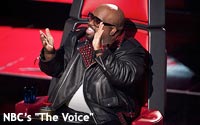 The simple practice of displaying an official
program hashtag at the beginning of a television show can increase the social conversation by nearly two-thirds.
The simple practice of displaying an official
program hashtag at the beginning of a television show can increase the social conversation by nearly two-thirds.
According to the social analytics and monitoring company
Brandwatch, viewers tweet about a particular program about 1,200% more when the show is airing and are twice as likely to use the official hashtag on broadcast day. Combined, the two statistics amount
to a 63% greater likelihood that programs publicizing their official hashtags will become part of the Internet conversation.
The study from the U.K.-based company analyzed Twitter
conversations about five of the top U.S. and U.K. television shows during 2012. Three shows -- the U.K.’s “The Great British Bakeoff,” and U.S. shows “The Voice” and The
“Biggest Loser” -- stood out by consistently engaging with their audience before, during and after the programs aired with the clear use of their official hashtags. (The study also broke
down leaders by category. “Glee” in the U.S. was the leader among dramas, while “BBC Question Time” in the U.K. led factual programming. The U.S.’s “How I Met Your
Mother” led comedies, while the U.K.’s “Hollyoaks” led the soap category. For sports programming, the leaders were “Soccer AM” in the U.K. and
“SportsCenter” in the U.S.)
Consumers are increasingly using multiple media at the same time, particularly when watching television. According to a recent poll of 1,000
U.S. consumers from KPMG, 42% of the respondents said they watch TV and access the internet via a laptop or PC at the same time. Another 17% said they watch TV while using a smartphone. Just over a
fifth (22%) said they were using these devices to access a social media site while watching TV.
To capitalize on this growing trend of “dual-screening,” the
Brandwatch study reveals that there are a few simple steps programmers can take to increase the conversation around their shows. Among the most successful programs in the Brandwatch study, 83% used
their official hashtag in most or all of the tweets they issued, and 61% regularly tweeted during the broadcast time to keep the conversation relevant.